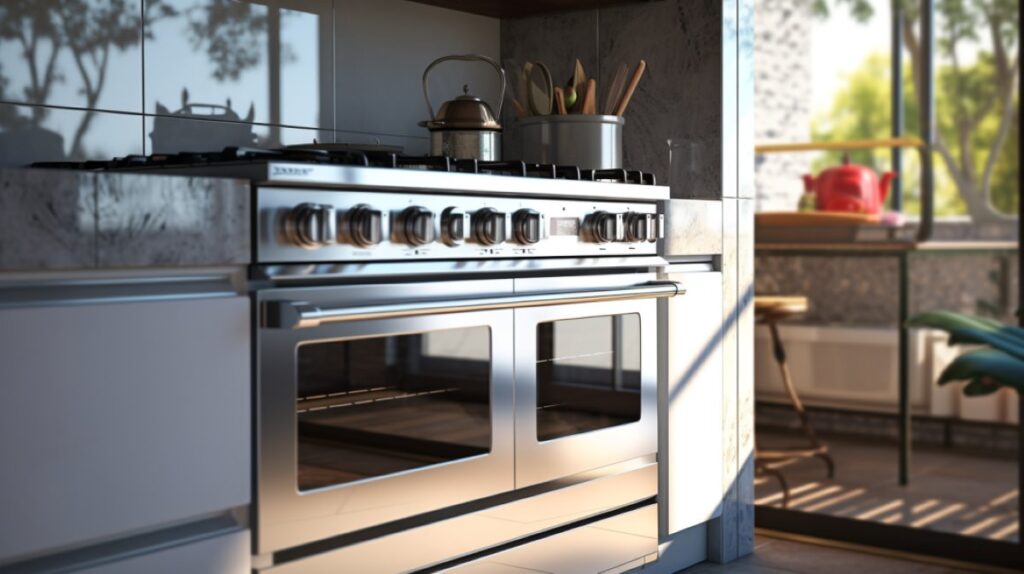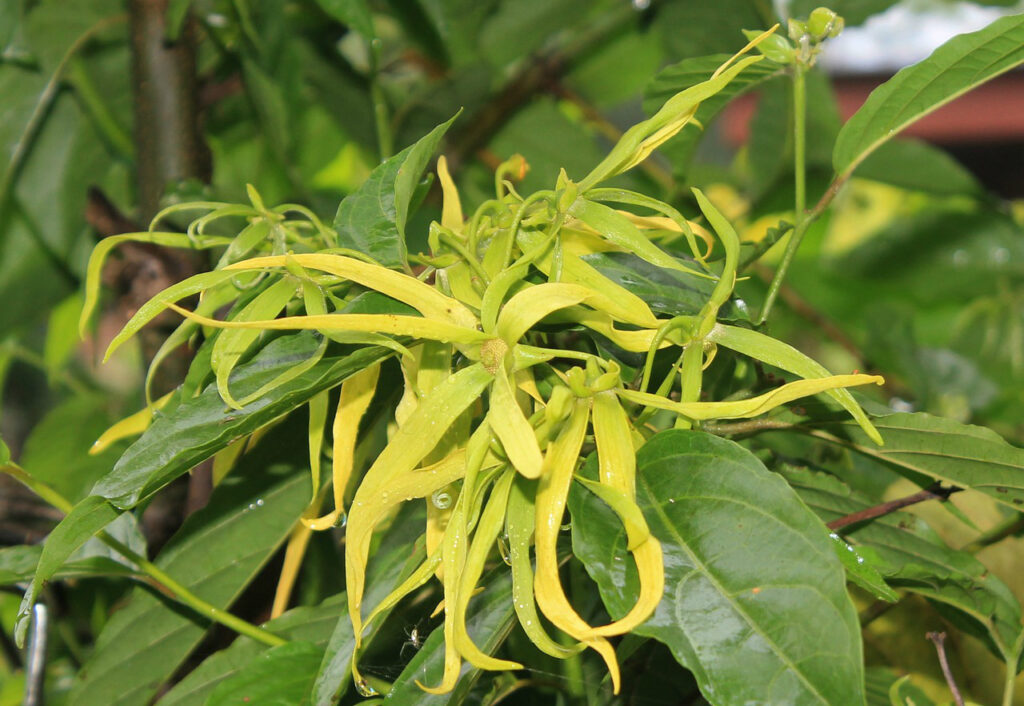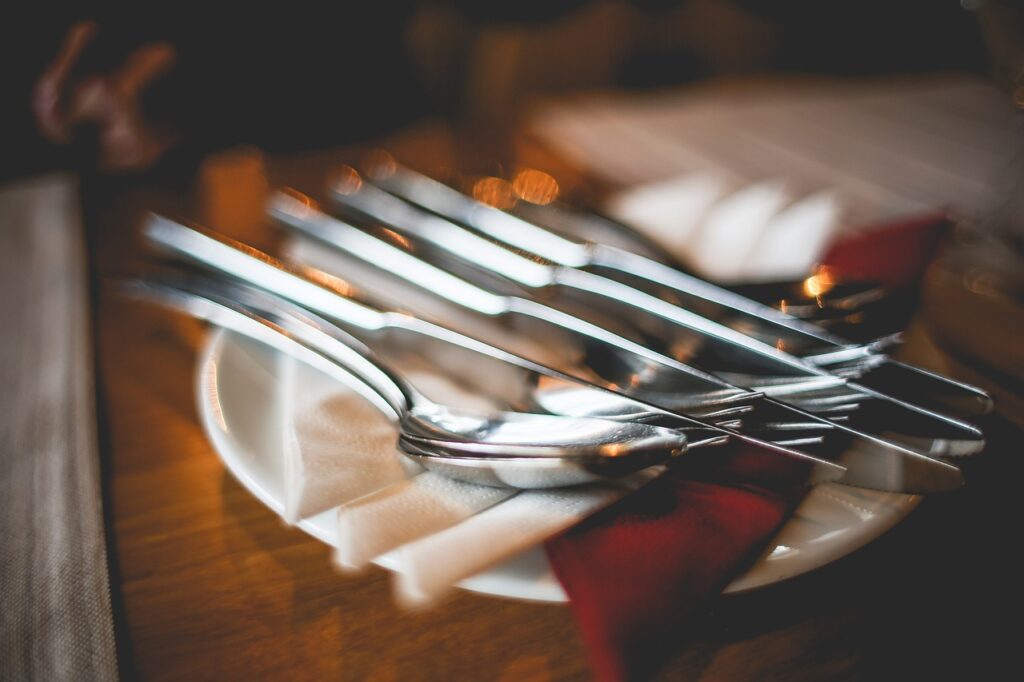Stovetop Cleaning Hacks: DIY Guide and 9 Easy Cleaning Tips
The stove is the centerpiece of our kitchen. It’s where we practice our culinary skills with creativity, spend time cooking with our little ones, and make incredible food for our loved ones. However, keeping your stovetop clean when it gets so much love can sometimes feel like a never-ending battle against grease and baked-on food.
- Getting Started with Stovetop Cleaning
- Daily Cleaning Techniques
- Deep Cleaning Process
- Specialty Tips for Gas Stovetops
- Specialty Tips for Electric Stovetops
- Stovetop Cleaning Hacks FAQs
- 1.) What is an effective method for cleaning burnt residue from a stove top?
- 2.) How can one clean a stove top using vinegar and baking soda?
- 3.) What are the best cleaners to use on a black glass stove top?
- 4.) How do you properly clean the burners on a gas stove top?
- 5.) Can dryer sheets be used to clean a stovetop, and if so, how?
- 6.) What is the trick to removing tough stains from an electric stovetop, as seen on TikTok?
Over time, even the most meticulous home cooks can encounter stubborn stains and layers of grease that resist ordinary cleaning methods. In this post, you’ll discover straightforward and effective cleaning hacks that will help you tackle even the toughest stains on your stovetop. We have a glass stovetop and know how easy it is for them to quickly build up grime.
The right cleaning approach and a bit of patience can make a significant difference, whether it’s a glass surface with smudges or a gas stove with caked-on food particles. From simple household ingredients to a little elbow grease, you’ll learn how to restore your stove top’s shine without resorting to harsh chemicals or expensive products.
Getting Started with Stovetop Cleaning
First, it’s essential to know what kind of stove you have. Each of the below types of stoves has different parts, meaning the cleaning method will also be a bit different for each.
Identifying Your Stove Type
- Gas Stove: You’ll typically have removable grates and burners. A distinguishing feature is the open flame for cooking.
- Electric Stove (exposed coil): These often come with coil burners that come into direct contact with pots and pans. This stove type will involve cleaning methods similar to gas stoves.
- Electric Glass Stove (flat top, tempered ceramic glass): These require gentle cleaners and cloths to prevent damage to the surface. We prefer glass top stoves above all other stove types since they’re easy to clean and, in our opinion, more aesthetically pleasing.
Assembling Cleaning Supplies
- Materials: Have a variety of brushes or sponges, and don’t forget a plastic scraper for tough spots. Keep in mind that we will always avoid using a metal scraper since it can easily damage the surface of your stove.
- Stainless Steel: Opt for non-abrasive cleaners like warm, soapy water or specialized stainless steel cleaners.
- Baking Soda & Vinegar: An effective duo for several stove types, baking soda acts as a gentle abrasive, and vinegar cuts through grease. These two household items are incredible when used together, including for cleaning drains!
- Dish Soap: A standard cleaning agent for removing food particles and light grease. If you’re using a conventional dish soap, Dawn is definitely the best, in our opinion, especially for tough cleaning jobs. That said, we prefer to use natural dish soap whenever possible.
- Microfiber Cloth: Ideal for finishing touches, leaving your stove streak-free and shining without scratching the surface.
Each cleaning agent has its place in your cleaning toolkit, and combining them appropriately will yield the best results, especially when tailored to your stove’s material and type. Armed with the correct supplies and knowledge, you’ll be ready to tackle any stovetop challenge.
Daily Cleaning Techniques
If you experience a burning smell every time you turn on your stove, the chances are that you’re not regularly cleaning it. The burning smell is from the food, grease, or other residue left over from previous cooking sessions. You can prevent stubborn grime and grease buildup by tackling spills right after cooking and practicing regular upkeep.
Another quick detail: every time you heat a dirty stove, you may actually be cooking the dirt onto your stove’s surface, making future cleanups next to impossible. This will lead to burn stains, rough surfaces, and degradation of your cooking and surrounding surfaces. Especially if you have a new stove, be sure to clean it after each time you cook (more on that below).
Wiping Down After Cooking
Immediately after cooking, ensure the stovetop is cool to the touch before you begin cleaning. Use a microfiber cloth to wipe the surface; these cloths are efficient for lifting residue without leaving scratches. It’s essential to address spills quickly to prevent them from hardening and becoming more challenging to remove later.
- Step 1: Wet a microfiber cloth with warm water.
- Step 2: Wring out excess water so the cloth is damp, not soaking.
- Step 3: Gently wipe the stovetop to remove any loose mess or crumbs.
- Step 4: For more stubborn spots, apply a small amount of dish soap to the cloth before wiping.
Rinse the cloth as needed during the process to ensure you’re not spreading the mess. Also, if you used soap for the initial wipe-down, rinse your cloth, then wipe everything down again to remove any soap residue.
Preventing Grease Buildup
To avoid grease from setting onto your stovetop, make it a habit to clean up immediately after any oily spills. A proactive approach saves you from heavy-duty scrubbing later. Additionally, if you find that you’re regularly cleaning up a lot of grease from off of your stovetop, we’ve got two recommendations:
- Use less grease: That’s right, you’re probably using too much grease if you find that you need to clean it off of your stovetop multiple times a week. Your stovetop and your body will thank you.
- Review your cooking method: When cooking with oils and other messy ingredients, making a few simple tweaks, like cooking at lower temperatures, can drastically reduce the amount of mess that occurs. Try cooking with reduced heat (high heat is almost never needed), and when using a spatula, turn the food towards the center of the pot or pan rather than towards the outer edge.
For cleaning grease, perform the following steps:
- Step 1: Mix a solution of equal parts water and vinegar in a spray bottle.
- Step 2: Spritz the solution onto the stovetop after it has cooled from cooking.
- Step 3: Let it sit for a minute to break down the grease, then wipe it with a clean, damp cloth. For heavily greased areas, you can use a degreasing detergent like Dawn.
- Step 4: For daily shine, lightly buff the surface with a dry microfiber towel.
Remember to rinse off any cleaning solutions thoroughly to prevent streaks and ensure a spotless finish.
Deep Cleaning Process
When your stovetop is coated with stubborn grime and baked-on food, a thorough, deep clean is necessary to get it looking good again. The following steps will guide you through tackling the most challenging areas with confidence.
Dealing with Burnt-on Food
To soften burnt-on food, soak the affected areas with a mixture of hot water and dish soap. Allow it to sit for at least 15 minutes before attempting to scrub. This is the most important step for burned-on food, whether you’re cleaning your stovetop, a pot that was left on the stove too long, or a baking pan. This step will save you from unneeded scrubbing and frustration; don’t skip it.
This soaking process helps to degrease and loosen the residue. Afterward, use a non-abrasive scrubbing pad to gently remove the food without scratching your stovetop’s surface. For tougher spots, a paste of baking soda and hydrogen peroxide can be applied. Spread it over the burnt-on food, let it sit, then scrub gently and rinse thoroughly.
- Soak: Hot water + dish soap, 15 minutes
- Scrub: Non-abrasive pad
- Optional paste: Baking soda + hydrogen peroxide, then rinse
Removing Stubborn Stains
For stubborn stains, especially on glass stovetops, using a single-edged scraper can be highly effective. Carefully cover the area with water and dish soap, then scrape at an angle to lift away the residue without damaging the surface.
If stains persist, apply a vinegar spray to break down grease and make the area easier to wipe clean. Since vinegar is an acid, this will help to dissolve tough stains.
Alternatively, vinegar can safely be mixed with isopropyl alcohol. When those two are mixed, they make a terrific glass cleaner.
Again, we recommend using a plastic scraper, not metal.
Always follow up with a dry cloth to polish the surface and remove any streaks.
- Scraper: Single-edged, at an angle
- Vinegar spray: Apply and let sit; wipe clean (optional: mix with rubbing alcohol)
- Dry cloth: Polish to finish
Remember, regular maintenance can prevent the need for laborious deep clean sessions. However, when required, these methods will help you clean your stovetop thoroughly and safely.
Using Lemon Juice
Harness the cleaning power of citrus with lemon juice. Not only does it have a refreshing scent, but it’s also a natural degreaser, making it ideal for kitchen use.
Note: Many cleaning hacks online mention dipping the lemon in baking soda and then using it as a sponge to clean surfaces. The problem with that, however, is that they’ll just neutralize each other, making them useless for cleaning.
Baking soda and lemon juice are both great cleaners when used individually. There’s no need to mix the two before cleaning. However, you can add baking soda as the final step before a final wipe-down. More on that below.
Instructions:
- Cut a lemon in half
- Use the lemon half as a scrubber, working in circles on the stovetop.
- Allow the juice to sit for a few minutes, then wipe away with a wet cloth.
The acid in the lemon juice helps break down grease, leaving your stovetop shining without any harsh chemicals.
Another strategy would be to wipe everything down with lemon juice, let it sit and eat away the mess, then sprinkle on baking soda and wipe it down with a wet cloth. In this case, the baking soda acts as an abrasive to help dislodge remaining stuck-on foods or grease. It’s okay if these two natural cleaning items neutralize each other at the end of the cleaning process.
Specialty Tips for Gas Stovetops
When maintaining your gas stove, paying special attention to the grates, burner heads, and control knobs ensures long-lasting cleanliness and functionality. Implementing these specialty tips will help keep your stove in top condition.
Cleaning Burner Heads and Grates
To start, remove the grates and burner heads from your gas stove. Soak them in hot, soapy water to loosen grime. For tougher stains, create a paste with baking soda and a little water, apply it to the surfaces, and let it sit before scrubbing. After soaking, use a non-abrasive brush or sponge to scrub away any remaining debris. Rinse thoroughly and dry before reassembling on the stove.
For the Burner Heads:
- Check for clogs in the burner holes.
- Use a toothpick or needle to carefully remove any blockages.
- Ensure they are completely dry to prevent any ignition issues.
Handling Control Knobs and Drip Pans
For deep cleaning, carefully pull the control knobs straight away from the stove to remove them. Clean these with a mixture of soap and warm water, avoiding submersion, which could cause damage to the electrical mechanisms. Wipe them down with a soft cloth and dry thoroughly.
It shouldn’t be very often that you need to clean control knobs. In most cases, you can simply wipe them down with a damp rag without removing them.
For the Drip Pans:
- Remove and soak in a cleaning solution (water and dish detergent work well) if they are detachable.
- For non-removable drip pans, wipe away spills with a damp cloth.
- For stubborn residue, use a 50/50 water and white vinegar solution, then rinse with clean water.
Keep an eye on the condition of your drip pans because once food begins to burn on them, it’s possible that it may start to degrade or deteriorate their surface after a while. Regularly clean food from drip pans to avoid this.
Specialty Tips for Electric Stovetops
Whether you have coil burners or a sleek glass stovetop, special attention to detail will keep your stove free of stains and scratches.
Managing Electric Burners
- Daily maintenance: At least a few times a week, especially if you’re more on the messy side when it comes to cooking, wipe your burners down after they’ve had a chance to cool. This will prevent buildup over time.
- Deep cleaning: For more stubborn residue on coil burners, remove them once cool and clean them with a mixture of water and a mild detergent. Ensure they are completely dry before reattaching.
Note: Never immerse electric burners in water, as this can damage the electrical components.
For coil burner electric stoves, it’s extremely important to keep the drip pans under the coils clean to ensure their longevity. Similar to gas stoves, once food burns onto the drip pans, they can degrade and deteriorate over time if they aren’t cleaned. We’ve experienced this with electric coil stoves we’ve used in the past.
Higher-quality drip pans are thicker and more durable, so keep that in mind if your drip pans are already corroded.
Care for Ceramic Glass Surfaces
- Routine care: Use a soft cloth and a 1:1 mixture of vinegar and water to clean light messes on the stovetop. Add dish soap for grease. For more heavy-duty cleaning, use a specialized cooktop designed specifically for ceramic glass.
- Dealing with spills: For spills and burned-on food, all the 1:1 vinegar, water, and dish soap (optional) solution to sit for at least five minutes before scrubbing with a non-abrasive sponge or cleaning pad.
Avoid scratches: Use only non-abrasive pads and cleaners designed for glass or ceramic surfaces to prevent scratches on your electric stovetop. Also, never use metal scrapers on your glass stovetop.
Stovetop Cleaning Hacks FAQs
1.) What is an effective method for cleaning burnt residue from a stove top?
Plain old vinegar works quite well for burnt-on residue since it’s an acid. Additionally, you could try soaking the residue in a water and dish soap solution. Apply it to the affected areas, let it soak for a few minutes, and scrub with a sponge to remove the grime. Additionally, try any of the other cleaning solutions and hacks mentioned in the post above.
Helpful tip: When cleaning with baking soda, it will neutralize acids. That means there’s no point in mixing it with vinegar or lemon juice before cleaning. Instead, use baking soda as a final step in the cleaning process to neutralize the acids before the final wipe-down. Or, use it with some water as an initial standalone cleaning step.
2.) How can one clean a stove top using vinegar and baking soda?
Wipe down the area with a 1:1 mixture of vinegar and water, using a spoon or plastic scraper for stuck-on food. Then, sprinkle baking soda onto the area you’re cleaning and wipe it down with a wet sponge. This final step will neutralize the vinegar, and the abrasive quality of the baking soda will dislodge any remaining stuck-on food.
3.) What are the best cleaners to use on a black glass stove top?
For black glass stove tops, a cleaner with a non-abrasive base is key. A simple mixture of dish soap and water works quite well. For stains, soak the area with undiluted vinegar for at least 10-15 minutes, then wipe down with hot water.
4.) How do you properly clean the burners on a gas stove top?
For gas stove burners, start by soaking the grates and burner caps in soapy water. Then, use a mix of dish soap and water or a specialized degreaser to scrub away residue gently.
5.) Can dryer sheets be used to clean a stovetop, and if so, how?
Yes, dryer sheets can be used to help loosen burnt-on food. Lay a warm, damp dryer sheet over the affected area to sit for a few hours, then wipe away the residue for an easier clean-up process.
6.) What is the trick to removing tough stains from an electric stovetop, as seen on TikTok?
TikTok users suggest using a paste of lemon juice and baking soda. However, there’s absolutely no reason to mix them together since they just neutralize each other, making for a solution that isn’t useful for cleaning anything.
Instead, cover the area in lemon juice, vinegar, or a combination of either of those two. Once that’s soaked in for a few minutes, you can finish the process by sprinkling baking soda to neutralize the acid from the lemon or vinegar for the final wipdown. Creating a paste before cleaning is counterintuitive.
The neutralization step should be saved after the bulk of the cleaning has been completed.


